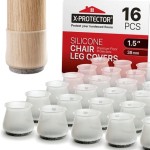Can You Stain Bamboo Flooring? A Comprehensive Guide
Bamboo flooring, known for its sustainability, durability, and unique aesthetic, has gained significant popularity as an alternative to traditional hardwood. While bamboo offers various natural tones, homeowners often wonder if they can customize the color further by staining it. The answer is yes, you can stain bamboo flooring, but the process requires careful consideration and preparation to achieve the desired results. This article will explore the intricacies of staining bamboo flooring, encompassing the types of bamboo, preparation steps, staining techniques, and potential challenges.
Before delving into the staining process, it's crucial to understand the nature of bamboo as a flooring material. Bamboo is a type of grass, not wood, and its cellular structure differs significantly from hardwood. These structural differences influence how bamboo absorbs stain. Furthermore, the type of bamboo floor you have plays a vital role in determining the success of staining.
Understanding Different Types of Bamboo Flooring
There are three primary types of bamboo flooring available: horizontal, vertical, and strand-woven. Each type possesses unique characteristics that impact stain absorption and the final appearance.
Horizontal Bamboo: Constructed by pressing bamboo strips together horizontally, horizontal bamboo flooring exhibits a distinctive, wide-knuckle appearance. The visible nodes and grain patterns can create an interesting visual effect, but they can also make staining uneven, as the different densities of the bamboo strips absorb stain differently.
Vertical Bamboo: In vertical bamboo, the bamboo strips are aligned vertically and glued together. This construction method creates a cleaner, more uniform appearance compared to horizontal bamboo. Vertical bamboo tends to absorb stain more consistently due to its uniform density but may still exhibit some variation depending on the quality of the material.
Strand-Woven Bamboo: This type is the most durable and hardest form of bamboo flooring. Strand-woven bamboo is created by shredding bamboo stalks into strands, compressing them under high pressure, and then bonding them with adhesives. The random orientation of the strands results in a unique, textured appearance that often resembles hardwood. While strand-woven bamboo is exceptionally strong, its density can make it more challenging to stain evenly. The high density limits stain penetration, and the adhesive used in manufacturing can sometimes interfere with stain absorption.
Therefore, identifying the type of bamboo flooring is the initial step in determining the appropriate preparation and staining techniques.
Preparing Bamboo Flooring for Staining
Proper preparation is paramount for successful staining. Inadequate preparation can lead to uneven stain absorption, blotchy finishes, and overall unsatisfactory results.
Acclimation: Before any work begins, allow the bamboo flooring to acclimate to the environment in which it will be stained and used. The process typically involves leaving the flooring in the room for several days to a week, allowing it to adjust to the temperature and humidity levels. This helps prevent warping or expansion issues after staining.
Cleaning: Thoroughly clean the bamboo flooring to remove any dirt, dust, wax, or other contaminants. Use a pH-neutral cleaner specifically designed for wood or bamboo flooring. Avoid harsh chemicals or abrasive cleaners, as they can damage the surface. Rinse thoroughly and allow the floor to dry completely before proceeding.
Sanding: Sanding is crucial for removing the existing finish and creating a smooth, even surface for the stain to adhere to. Start with a coarser grit sandpaper (e.g., 80-grit) to remove the existing finish, and then gradually move to finer grits (e.g., 120-grit, 180-grit) to refine the surface. Ensure that you sand in the direction of the grain (or the dominant direction of the weave in strand-woven bamboo) to avoid scratching the floor. Pay particular attention to edges and corners, using a hand sander or sanding block to ensure consistent sanding.
Dust Removal: After sanding, meticulously remove all dust particles from the floor. Use a vacuum cleaner with a soft brush attachment to vacuum the entire surface thoroughly. Then, use a tack cloth to wipe down the floor, picking up any remaining dust. This step is critical, as any residual dust can interfere with stain absorption and create imperfections in the finish.
Testing: Before staining the entire floor, test the stain on an inconspicuous area, such as a closet or under a piece of furniture. This allows you to assess the stain's color and how it interacts with the bamboo. Apply the stain according to the manufacturer's instructions and allow it to dry completely. Evaluate the color, evenness of the stain, and any potential issues before proceeding with the entire floor.
The sanding process requires attention to detail and patience. Avoid rushing this step, as it directly influences the final outcome of the staining project. Consider renting or purchasing a floor sander for larger areas to achieve a uniform finish efficiently.
Staining Techniques and Considerations
Choosing the right stain and applying it correctly are essential for achieving the desired color and finish. Different types of stains interact differently with bamboo, and specific techniques are needed to ensure even application.
Choosing the Right Stain: Opt for a high-quality stain specifically designed for wood or bamboo flooring. Oil-based stains tend to penetrate deeper and provide a richer color, but they also emit stronger odors and require longer drying times. Water-based stains are lower in VOCs (volatile organic compounds) and dry faster, but they may not penetrate as deeply. Gel stains are also an option, particularly for strand-woven bamboo, as they sit on the surface and minimize uneven absorption. Consider testing different stain types on your test area to determine which one provides the best results.
Application Methods: The recommended application method depends on the type of stain and the size of the area being stained. Common methods include using a brush, roller, or cloth. When using a brush, apply the stain in the direction of the grain (or the dominant direction of the weave) in long, even strokes. Avoid applying too much stain at once, as this can lead to drips and uneven absorption. When using a roller, choose a roller with a short nap to prevent excessive stain buildup. When using a cloth, apply the stain in a circular motion, working it into the surface. Ensure adequate ventilation during application, especially with oil-based stains.
Wiping Excess Stain: After applying the stain, allow it to sit for the recommended amount of time specified by the manufacturer. Then, use a clean, lint-free cloth to wipe off any excess stain. Wiping off the excess stain is crucial for preventing a sticky or blotchy finish. Wipe in the direction of the grain (or the dominant direction of the weave), ensuring that all excess stain is removed. If you want a darker color, you can apply a second coat of stain after the first coat has dried completely. However, be sure to sand lightly between coats with a very fine-grit sandpaper (e.g., 220-grit) to ensure proper adhesion.
Drying Time: Allow the stained bamboo flooring to dry completely before applying a topcoat. The drying time will vary depending on the type of stain, the humidity, and the temperature. Follow the manufacturer's instructions for recommended drying times. Insufficient drying can lead to problems with the topcoat, such as cloudiness or peeling.
Applying a Topcoat: After the stain has dried completely, apply a protective topcoat to seal the surface and enhance its durability. Polyurethane is a popular choice for flooring, as it provides excellent protection against scratches, wear, and moisture. Choose a water-based or oil-based polyurethane, depending on your preference and the type of stain you used. Apply the polyurethane in thin, even coats, following the manufacturer's instructions. Sand lightly between coats with a fine-grit sandpaper (e.g., 220-grit) to ensure proper adhesion. Allow the topcoat to dry completely before allowing foot traffic on the floor.
Potential Challenges and Troubleshooting
While staining bamboo flooring can be a rewarding project, it's essential to be aware of potential challenges and how to address them.
Uneven Stain Absorption: One of the most common challenges is uneven stain absorption, particularly with horizontal and strand-woven bamboo. This can result in a blotchy or inconsistent finish. To minimize this, ensure thorough sanding, use a wood conditioner before staining, and apply the stain evenly, wiping off any excess promptly.
Adhesive Interference: The adhesive used in manufacturing bamboo flooring can sometimes interfere with stain absorption, especially in strand-woven bamboo. If you encounter this issue, try using a gel stain, which sits on the surface and is less likely to be affected by the adhesive. You can also try applying multiple light coats of stain instead of one heavy coat.
Color Variation: Bamboo flooring can exhibit natural color variations, even within the same batch. These variations can become more pronounced after staining. To minimize color variations, consider using a stain with a higher pigment load, which will mask the underlying color differences. You can also try blending different stain colors to achieve a more uniform look.
Scratching or Damage: Bamboo flooring can be susceptible to scratching or damage during the staining process. Protect the surrounding areas with drop cloths and handle tools with care. If you do scratch or damage the floor, repair it before applying the stain. Fill any gouges or holes with a wood filler that is compatible with bamboo, sand it smooth, and then proceed with the staining process.
Finish Problems: Problems with the topcoat, such as cloudiness, peeling, or blistering, can occur if the stain is not completely dry or if the topcoat is not applied properly. Ensure that the stain is completely dry before applying the topcoat and follow the manufacturer's instructions carefully. Apply the topcoat in thin, even coats, sanding lightly between coats to ensure proper adhesion.
Staining bamboo flooring can be a successful project with proper preparation, appropriate techniques, and awareness of potential challenges. Understanding the nature of bamboo, choosing the right stain, and taking the time to prepare the surface thoroughly are all critical for achieving the desired results. While the process may require patience and attention to detail, the result can be a beautifully customized bamboo floor that enhances the aesthetic appeal of your home.

Bamboo Floor Finishes Explained The Flooring Company

Electrodry Bamboo Floor Restoration Gorgeous Floors In 1 Day Without The Sanding Mess

Customising Your Bamboo Boards Stains Oils Paints

Refinishing Bamboo Floors Key Benefits And Process Overview

Can You Stain Bamboo Floors Ehow Com

Stained Bamboo Flooring Dyed Colored Maple Cherry Walnut

Stained Bamboo Flooring Dyed Colored Maple Cherry Walnut

Resanding Bamboo A Tricky Proposition Wood Floor Business

Electrodry Bamboo Floor Restoration Gorgeous Floors In 1 Day Without The Sanding Mess

Different Styles Of Bamboo Flooring The Company







